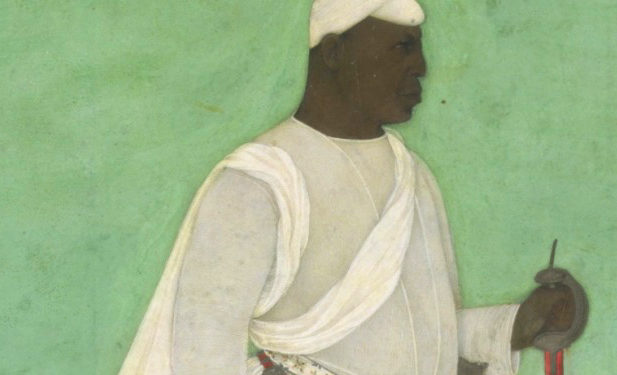Malik Ambar was an African slave who later turned into a warrior. He went through several hands of slave dealers as a youth from his hometown, Ethiopia to India.
His story is said to be an unusual story of how a slave turned into a social leader, then a soldier, and later the founder of the city that is known as Aurangabad.
Ambar was also a prime minister who later became a kingmaker and de facto ruler of the Ahmadnagar sultanate in the Decca region of India.
Malik Ambar is said to be a pioneer in guerilla warfare in his region and he is credited with the initiative of a revenue settlement of the Deccan. Ambar is also a figure of veneration to the Siddis of Gujarat.
Who is Malik Ambar?
Malik Ambar was born Chapu (or Shambhu or Shanbu) in 1548 in Kabmbata the southern region of modern Ethiopia. His exact birthplace is disputed as some sources say he was born in the Ethiopian town of Hara.
10 Facts About Slave Who Became Kingmaker
1. Malik Ambar was sold to slavery by his parents
At an early age, Malik Ambar was among the thousands of men, women, and children that were captured in Africa and sold into slavery in the Middle East and India. There are speculations that Malik Ambar was either captured or sold into slavery by his poor parents who had to do so in order to pay a debt.
He was sold to Arab merchants in Yemen. He was sold out again and sent to Baghdad and was trained before he was sent to India to serve Chengiz Khan, the regent minister of the sultan of Nizam Shashi in Ahmadnagar. Khan was also a former slave who had served as the Peshwa or chief minister of the sultanate of Ahmadnagar.
Malik Ambar got converted to Islam and his name became ‘Ambar’.
2. His master’s wife freed him after his master died
The African slave earned his freedom after his master died barely five years after he was bought. His master’s wife freed him and he served as the sultan of Bijapur where he later earned the title “Malik”. He served as a mercenary for the sultan of Bijapur and he was in charge of a small troop.
3. Malik Ambar’s wife and children
Ambar was married to a Siddi woman named Bibi Karima. They had two sons, Fateh Khan and Changiz Khan, and two daughters whose names were not revealed.
Read Also: Kikuyu Tribe- 10 Interesting Things No One Ever Told You About Them
4. He was the regent of the Nizamshahi dynasty of Ahmednagar
Malik Ambar left his work with the sultan of Bijapur for lack of support and entered the Nizam Shahi Army. He served as the regent of the Nizamshahi dynasty of Ahmednagar from 1607 to 1627.
His service there was successful as he raised a large army that increased the power and strength of the Murtaza Nizam Shah II. After he helped the Shah get the throne, he was made the prime minister.
5. Malik Ambar created a mercenary force of over 1000 men
Ambar trained and built his own cavalry from having 150 men to over 7000 men. He also revitalized the Ahmadnagar sultanate by installing puppet sultans to oppose Mughal incursions from the north. His army grew by 1610. He had over 40,000 Deccanis and 10,000 Habshis.
Malik Ambar fought and defeated Mughal emperor Jahangir and tried to seize control of the realm during the next decade. He later relocated his capital from Paranda to Junnar after emperor Aurangzeb invaded Deccan around 1658 to 1707. He then created a new city which he called Khadki which was later changed to Aurangabad.
The militia of mercenaries he built up was hired out by different regions. And he became known as a skilled military commander.
6. He was one of the Deccan region’s proponents of guerilla warfare
Ambar is said to be among the proponents of guerrilla warfare. He helped Shah Jahan wrestle power from his stepmother Nur Jahan who wanted to place her son-in-law on the throne.
He reportedly defeated the Mughal General Khan Khanan and took Ahmednagar Fort and town from the Mughals with the help of some Maratha lords. However, he was later beaten by the Mughals in one of the engagements and he was forced to cede the fort of Ahmadnagar.
7. Malik Ambar died at the age of 77
Malik Ambar died 13 May 1626 at the age of 77 leaving his wife Bibi Karima and four children behind. He was not just a warrior but also a good administrator as well.
8. His son Fateh Khan succeeded him as Nizam Shah regent
Fateh Khan took over as the regent of the Nizam Shahs but unfortunately, he did not possess his father’s political and military prowess. Khan was involved in some internal struggles which led to the murder of Sultan Burhan Nizam shah III, his nephew.
The sultanate was later conquered by the Mughal empire just within ten years of the death of Malik Ambar.
Malik Ambar’s tomb is located in Khuldabad close to the mausoleum of the great Sufi saint Zar Zari Baksh.
9. Malik Ambar was regarded as a patron of arts
Malik Ambar was interested in not just arts but anything regarding education generally. His architectural skills gave birth to the city of Aurangabad.
The city was formerly known as Khirki in 1610 but after Ambar passed, his son renamed the place Fatehpur until 1653 when the Mughal emperor invaded Deccan and the city became his capital. Since then, the city became known as ‘Aurangabad’.
10. Malik Ambar is remembered for the construction of the Janjira Fort
Malik Ambar is famous for the canal water supply system in the city of Aurangabad. the Neher as it is called was done within 15 months. The canal was described as an impressive engineering feat that consisted of a 7 feet deep tunnel with 140 manholes. The canal worked effectively without any cleaning and maintenance for almost 321 years until 1931 when it had to be cleaned.
Aside from the water supply, Malik Ambar is credited with the construction of the Janjira Fort in the Murud Area of present-day Maharashtra India. The fort helped the Siddis to withstand invasion attempts by Marathas, Mughals, and others who tried to capture Janjira.





















Discussion about this post